At one time, night sights and fiber-optics were only add-on features. They are still available as aftermarket options. However, more and more, pistols are coming out with upgraded sights right out of the box. Sometimes they are offered in several variations with different sighting options, such as the Smith and Wesson M&P Shield or 340PD. This is fortunate for the consumer, as we can save money — and time — getting the firearm exactly as we want it from the factory.
Aside from the general, budget, three-dot-painted sights, the two main sighting options you’ll see are night sights and fiber-optics. Brass or gold beads, and blacked-out posts are also out there, but they are more common among serious target shooters. Much of what is manufactured and marketed today is geared toward self-defense, and that is what we’ll focus on for now.

Night Sights
Night sights use tiny tritium vials to illuminate the dots on your sighting setup. The typically snag-free steel construction makes them incredibly durable and thus popular for duty use. This also makes them great for everyday carry and home defense.
The majority of the world’s tritium comes from the same Swiss source, so there is no real quality variation. Tritium does have a shelf life though, they tend to stay bright about 10–15 years, but will gradually dim as you approach the final years. However, they are still very usable, even as they dim. I have an 8-year-old SIG whose sights still glow well. The half-life of tritium is about 12.5 years, meaning they will be half as bright as they were originally in the allotted time.
The primary benefit to night sights is as the name suggests, they are easy to see at night or in the dark. We don’t get to pick when a self-defense encounter will happen. It’s important to be able to get a clear sight picture in all lighting conditions. During the daytime, they function as a standard sighting setup. Many even feature high-visibility coloring to aid in daytime shooting. They feature simple construction and hold together well. In my experience, you can set ‘em and forget ‘em.
Because of the inherent size of the tritium vials and the daytime “paint” (for lack of a better word) surrounding them, they are not the best for shooting at long distances. The large dots can cover and obscure the target, making accuracy more difficult. The larger dots, however, are great for getting a fast sight picture for close range, defensive shooting.

Fiber-Optics
Fiber-optic sights utilize thin tubes (sometimes called fiber cables) that are designed to draw in and absorb light, resulting in high-visibility dots. The fiber optic is a flexible, colored fiber that transmits light the entire length and is made of a mixture of plastic and glass. It isn’t very thick, but features a reflective sheath surrounding the fiber itself.
This high-visibility, light-absorbing core material surrounded by reflective material traps light in the tube which is then visible to the shooter. This makes the bright colored tubes appear to light up a bit to your eye. They are “powered” by the lighting around them and therefore do not have an expiration date.
One major benefit to fiber-optic sights is that the thin rods create very small dots to comprise your sight picture. This allows you to see the target more clearly with fewer obstructions. This makes them great for the range, as they allow for excellent accuracy.
However, these plastic-like tubes are fairly fragile and can break under impact. At times, they have been known to fly off due to the recoil while firing. This is why most are designed with a metal frame guard to help protect the light pipes and keep them secure.

TruGlo offers a good set with a rigid frame. The fiber-optic rods slide into little tube sections and are melted at the ends to stay in place. If you happen to lose one, it’s a simple replacement job (many even come with replacement tubes), but I would not want it to happen in a self-defense situation. Although, if it does, you will still likely be able to get an impaired sight picture using the remaining hole(s). Red, orange, and green are the most common colors — similar to high-visibility night sights.
So, fiber-optics are great with light, but what about at night or in the dark? Well, first, firing in complete pitch black darkness isn’t common or advisable. Target identification is paramount. Most times we are just in low light and should have a weapon light. I know, “should.” Save the arguing for the Comment section. This provides enough light to get a decent sight picture. It is in no way better, or comparable, to true night sights, but it will likely function the majority of the time.

Purpose
By now, you’re likely asking, “Which is best?” That depends on purpose and preference. I lean heavily toward steel night sights. The added durability is comforting and the sight picture works better for my eyes and shooting. I just don’t feel like I’m benefited by anything other types of sights provide.
That is not to say I avoid fiber-optics altogether. However, I reserve them strictly for range guns — even then I do so sparingly. If a gun I like comes with a good set of sights, I don’t feel the immediate need to change them. But, if I have the option to have night sights from the jump, I take it.
There are those who prefer fiber-optic sights, though. Some feel the high-visibility and light absorption allows them to get a quicker sight picture and track the sights easier. This can translate to faster, more accurate firing.

I believe it’s largely up to personal preference. Understanding what sights work best for you really only comes by trying them. Your preferences may also change over time. I’m under 30, perhaps my feelings will be different as my eyes age.
Final Thoughts
It seems everything in the firearms world is about balance and compromise. From caliber selection to carry gun size, and even sight selection. Fiber-optic and night sights are the two most popular options, especially for defensive handguns. There are definite pros and cons to each, but they are both excellent options that will serve you well. If you haven’t, test them both out and see what works best for you. Then, get to shooting!
Do you prefer fiber-optic or night sights on your handguns? What is your thought process behind the decision? Let us know in the Comment section.

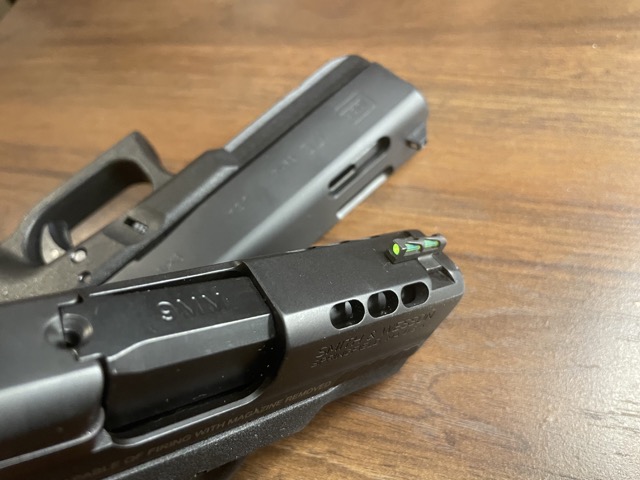
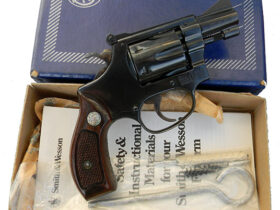


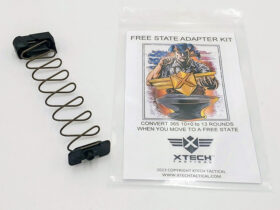
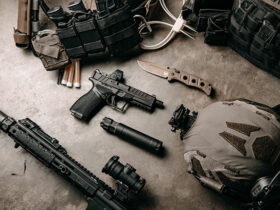
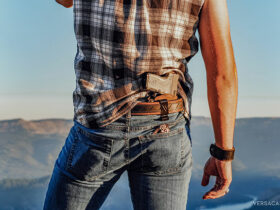
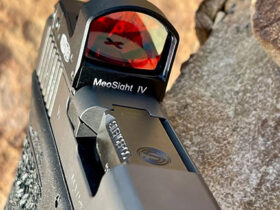
Leave a Reply